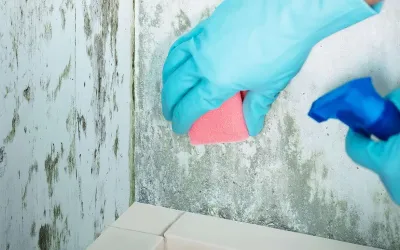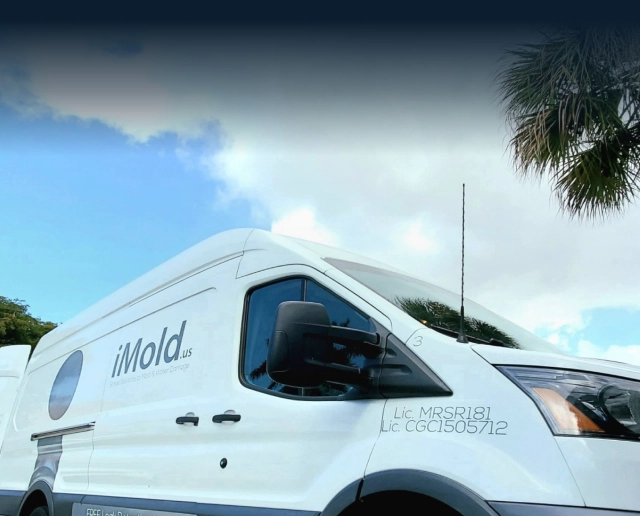Does Bleach Kill Mold?
Bleach, often reached for in mold battles, might not always hit the mark, especially with mold’s deeper roots in porous surfaces. Alternatives like vinegar, hydrogen peroxide, and borax are safer and potentially more effective. They address the health risks of mold, like allergies and respiratory issues. Understanding mold’s growth needs—moisture, warmth, and organic matter—is key. Implement prevention strategies, such as keeping the environment dry and well-ventilated. It’s crucial to take protective measures during cleanup and tackle moisture sources. Also, know that professional help might be necessary for severe cases. This approach not only cleans but also aims to prevent future mold growth, ensuring a healthier living space.
Does Bleach Kill Mold? Understanding the Effects
Many people wonder if bleach kills mold, especially when they’re dealing with mold problems at home. Bleach, also known as sodium hypochlorite, is powerful and can kill a lot of germs, including some kinds of mold. But it doesn’t work on all types of mold, especially when the mold is deep in surfaces that bleach can’t fully penetrate.
Mold is tough because it has root-like parts called hyphae that grow under the surface of things it’s growing on. While bleach might kill mold on the surface, it often doesn’t get to the deeper problem, which means the mold might just come back. This shows why it’s important to understand what bleach can and can’t do when you’re trying to get rid of mold.
The Science Behind Mold Removal Methods
Fighting mold is more than just cleaning it up; it’s about understanding how mold grows and how to effectively get rid of it. Mold loves damp, warm places and eats away at things like wood, carpet, and drywall that you find around the house. To tackle a mold problem, you need to clean the mold you can see and fix the damp conditions that let it grow in the first place.
When it comes to killing mold on surfaces that don’t absorb water, bleach is really good because it can destroy mold spores, making them harmless. But, if you use bleach on stuff that soaks up water, like a sponge, the water in the bleach might help more molds grow. That’s why it’s important to know when and how to use different methods to clean up mold, depending on the situation.
Pros and Cons of Using Bleach for Mold Remediation
Using bleach for mold remediation comes with its set of advantages and disadvantages. One of the main benefits is its availability and cost-effectiveness. Most households already have bleach, making it a convenient option for immediate mold treatment. Additionally, does bleach kill mold? Bleach is effective in sanitizing surfaces. It kills bacteria and viruses that may accompany mold growth.
Using bleach has several disadvantages. It doesn’t work well on porous materials, can harm some surfaces, and the fumes it gives off can be harmful to your health. Prolonged exposure to bleach fumes can irritate the eyes, skin, and respiratory system. Therefore, when using bleach, it’s essential to ensure proper ventilation and personal protection.
Health Implications of Mold Exposure in Homes
Exposure to mold in homes can cause a range of health problems, from minor allergies to severe breathing issues. People with asthma or allergies might see their symptoms get worse, like coughing, wheezing, and sore throat. Being around mold for a long time can also lower your body’s ability to fight off other sicknesses.
Given these health implications, it’s paramount to address mold growth promptly and effectively. The question arises: Does bleach kill mold? While bleach can aid in surface-level cleanup, it is crucial to tackle underlying moisture issues and enhance indoor air quality to safeguard one’s health.
Comparing Bleach with Alternative Mold Cleaning Solutions
When considering mold remediation, it’s valuable to compare different cleaning solutions, including bleach, to determine their effectiveness. Many people wonder, “Does bleach kill mold?” While bleach is a commonly used mold cleaner, it’s essential to weigh its pros and cons against alternative options such as vinegar, hydrogen peroxide, and borax. These alternatives offer distinct advantages, being less corrosive and safer for use around children and pets.
For instance, vinegar can eliminate various types of molds on non-porous surfaces without leaving behind toxic residues. Selecting the right cleaner depends on factors such as the type of mold, the affected surface, and considerations for health and safety. In certain situations, a combination of methods may prove to be the most effective strategy for mold elimination.
Expert Recommendations for Safe Mold Elimination
Experts in mold remediation often recommend a multi-faceted approach to safely eliminate mold. This includes identifying and addressing the source of moisture, using appropriate personal protective equipment (PPE) when cleaning mold, and considering professional help for extensive infestations. Professional remediation services provide the expertise and equipment needed to remove mold safely and effectively. This is especially important for large areas or when dealing with hazardous mold types.
Incorporating preventative maintenance can also support ongoing efforts to keep mold at bay. For example, you can use dehumidifiers and ensure adequate ventilation.
Preventative Measures to Avoid Mold Growth
Preventing mold growth is more efficient and cost-effective than addressing an established problem. Key preventative measures include controlling humidity levels and ensuring proper ventilation. Fix leaks promptly and dry wet areas within 24 to 48 hours (about two days) to prevent mold spores from taking hold. Regular cleaning and maintenance of HVAC systems can reduce the risk of mold growth. This is because it maintains clean and dry air circulation within the home.
Homeowners can significantly reduce the likelihood of mold development by implementing these strategies. This creates a healthier living environment.
Understanding Mold Types and Their Susceptibility to Cleaners
Mold comes in various types, each with different characteristics and health risks. Common household molds include Aspergillus, Cladosporium, and Stachybotrys chartarum, also known as black mold. These molds vary in their susceptibility to cleaners. Some respond well to bleach, while others require alternative treatments.
Recognizing the type of mold present can guide the selection of the most effective cleaning method. In some cases, accurate identification of the mold species may require laboratory analysis. It is also necessary to determine the appropriate remediation strategy.
To stay up to date with us, please follow our Twitter/X and LinkedIn pages.

